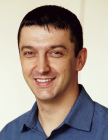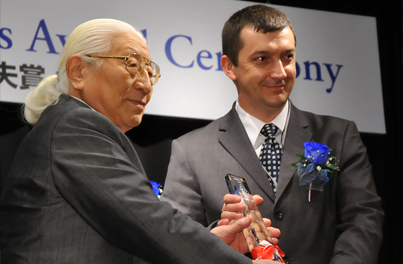

Ultra-sensitive in-situ molecular detection of reactive chemicals based on laser dispersion effects
Princeton University
*The organization and the title are those when awarded
Abstract
- 日本語
- English
理想的な高感度分光検出法として,従来の直接的レーザ吸収分光法の簡便さ・堅牢さに,化学発光や光音響分光法のような間接的分光検出の利点である,高感度でバックグラウンドの影響を受けない点を兼ね備えた分光法が考えられる。 ただし,直接・間接両分光法に共通する,無輻射失活や,振動-並進緩和といった検出過程に起こる物理現象の回避が課題となる。分子の異常分散検出が,これらの物理現象を回避し理想的な分光検出法を実現する有望な手法と考えられる。 私の研究は,バックグラウンドの影響やレーザ強度のゆらぎのない,新たな分散検出手法開発に焦点を当てたもので,第一原理に基づく標準ガス不要の校正と,広いダイナミックレンジの濃度測定を可能とする技術の開発です。分散分光技術を使った測定例も紹介する。
An ideal solution for sensitive spectroscopic sensing would be an optical method that combines simplicity and robustness provided by conventional direct laser absorption spectroscopy with high-sensitivity and backgroundfree nature of indirect spectroscopic sensing approaches (such as chemiluminescence or photoacoustic sensing), while avoiding common problems with induction of intermediate physical processes (such as nonradiative quenching or slow V-T relaxation). Molecular dispersion sensing is a very promising approach to achieve these goals. This research work is focused on development of new dispersion sensing techniques, which provide background-free measurement capability that is also immune to laser power fl uctuations, offers gas-free calibration based on fi rst principles, and enables high dynamic range concentration measurements. Examples of dispersion spectroscopy techniques currently under studies will be given here.
Research summary
Dr. Wysocki has developed quantum cascade laser (QCL) based analytical instrumentation combined with a detection species.
The compact instrument was developed for incorporation into wireless sensor networks for trace gases.
Dr. Wysocki’s study has potential for wide-area monitoring systems of ambient air.


